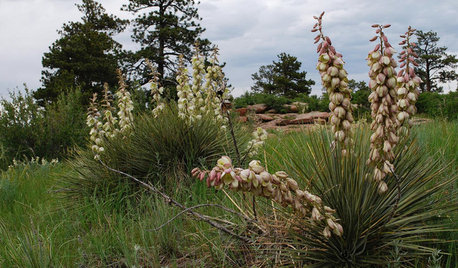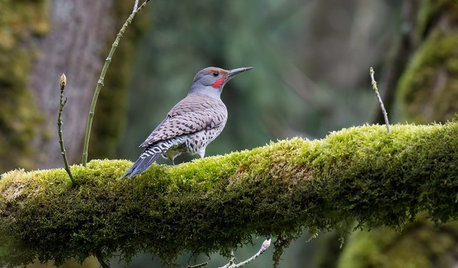colorado potato beetle larva
borderokie
10 years ago
Related Stories

COOL-SEASON CROPSCool-Season Vegetables: How to Grow Potatoes
This ever-popular tuber is a stalwart in spring and fall gardens and a staple in kitchens everywhere
Full Story
GARDENING AND LANDSCAPINGBid Bad Garden Bugs Goodbye and Usher In the Good
Give ants their marching orders and send mosquitoes moseying, while creating a garden that draws pollinators and helpful eaters
Full Story
GARDENING GUIDESHow to Switch to an Organic Landscape Plan
Ditch the chemicals for a naturally beautiful lawn and garden, using living fertilizers and other nontoxic treatments
Full Story
EDIBLE GARDENSSummer Crops: How to Grow Squash
Almost foolproof and with cheerful flowers, squash comes in a wide range of varieties to plant in spring
Full Story
GARDENING FOR BUTTERFLIES3 Ways Native Plants Make Gardening So Much Better
You probably know about the lower maintenance. But native plants' other benefits go far beyond a little less watering and weeding
Full Story
GARDENING GUIDESGreat Design Plant: Yucca Glauca
Soapweed yucca's pale green leaves brighten the winter garden and add sculptural interest year-round
Full Story
FARM YOUR YARDHow to Build a Raised Bed for Your Veggies and Plants
Whether you’re farming your parking strip or beautifying your backyard, a planting box you make yourself can come in mighty handy
Full Story
LIFEHow to Outsmart Backyard Critters
Learn to think like a raccoon, skunk or squirrel to keep your home safe and your garden intact
Full Story
GARDENING FOR BUTTERFLIESBe a Butterfly Savior — Garden for the Monarchs
Keep hope, beauty and kindness alive in the landscape by providing a refuge for these threatened enchanters
Full Story
GARDENING GUIDESBackyard Birds: Healthy Home Habitats for Northern Flickers
These colorful woodpeckers found across the U.S. and Canada love berries, seeds and ants and often nest in deep burrows in trees
Full StorySponsored
More Discussions






Okiedawn OK Zone 7
borderokieOriginal Author
Related Professionals
Reading Landscape Architects & Landscape Designers · Birmingham Landscape Architects & Landscape Designers · Mountain Brook Landscape Architects & Landscape Designers · West Chester Landscape Architects & Landscape Designers · Clearlake Landscape Contractors · College Park Landscape Contractors · Duarte Landscape Contractors · Norwalk Landscape Contractors · New Carrollton Landscape Contractors · Palos Heights Landscape Contractors · Bowie Decks, Patios & Outdoor Enclosures · Framingham Decks, Patios & Outdoor Enclosures · Racine Decks, Patios & Outdoor Enclosures · West Chester Decks, Patios & Outdoor Enclosures · Woodland Hills Decks, Patios & Outdoor Enclosuresslowpoke_gardener
Okiedawn OK Zone 7
borderokieOriginal Author
bettycbowen
Okiedawn OK Zone 7
User
Pamchesbay
Okiedawn OK Zone 7
katiez6
Pamchesbay
beardedscienceguy